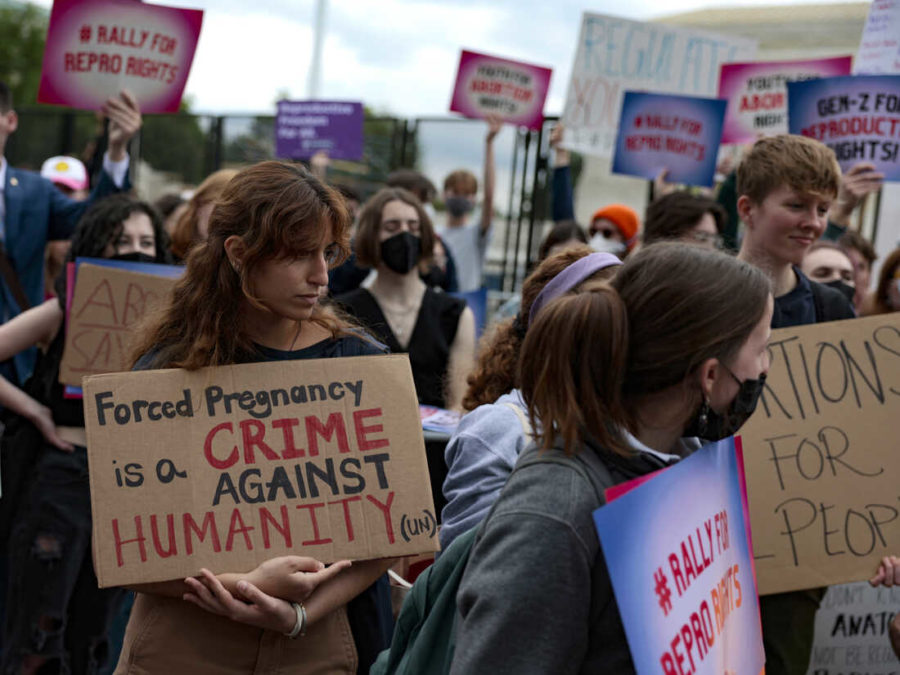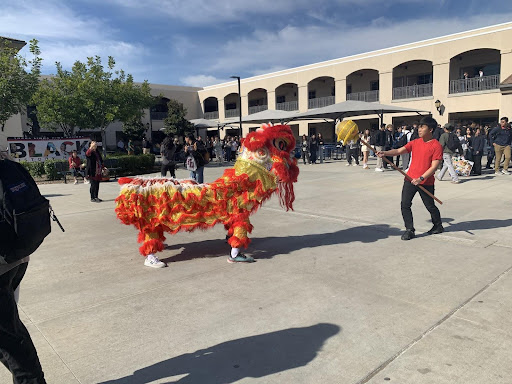A Brief History of Abortion Legislation in the United States
Caption: A group of engorged female activist protesting their believed right to abortion in front of the Supreme Court chambers following last Monday’s press leak.
May 31, 2022
Women around the United States of America, and throughout the world, experienced an extreme range of emotions following a leaked potential Supreme Court decision last Monday. Much to the surprise of the entire nation, a shocking new decision could be changing the verdict of one of the most historical and controversial cases in Supreme Court History – Roe v. Wade.
Abortion in the United States of America is not a new concept by any means, as initial appearances can be traced back as early as the beginning of the ninteenth century. By the 1850s, the United States Medical Association launched a full-scale campaign in an attempt to eradicate the procedure nationwide (City University of New York). At about the same time, contemporary early feminists began to show signs of opposition, as a slight battle for the female right to abortion began to show face.
A few decades later, the Comstock Act was passed in the United States, and under its jurisdiction, information regarding female reproductive health, contraception, and abortion was limited, if not prohibited entirely. In the following century, these attempts were widely successful, as abortion became a criminal offense in 49 states and Washington D.C.–excluding only Hawaii–by 1965 (Planned Parenthood). Like every controversial national decision, there was pushback and then a pull factor. The early 20th century showed a mass rejection of female reproductive rights, so it was only a matter of time before the sentiment switched, and Americans began to overtly campaign for their self-proclaimed God-given right.
That very same year, the widespread progressive sentiment of the 196os reigned supreme, as the Comstock Acts were repealed, and the Supreme Court made an unforgettable decision regarding the use of contraceptives in Griswold v. Connecticut. In this case, Estelle Griswold challenged a Connecticut law that prohibited the use of contraceptives by married households. The Supreme Court ruled in favor of Griswold, setting a strong precedent for the Supreme Court, a precedent that implied that the United States government should have little to no influence on the reproductive health of American women.
All of the factors led to arguably one of the most important and impactful Supreme Court cases in existence: Roe v. Wade. Pure name recognition warrants Roe v. Wade to have an A-list Supreme Court Case status, and it seems as though more Americans know about the outline of Roe v. Wade than they do any other Supreme Court Case. Despite the abundance of information about the case, the details remain widely overlooked in the minds of Americans. Many use the court case name title as a buzzword for some sort of modern political edge, and the specific details are seldom referenced.
The Supreme Court case arose in 1973, when a young Texan named Norma McCorvey, known by the pseudonym of Jane Roe, found herself pregnant yet unable to take care of a child. At the spry age of twenty-one, she was pregnant with her third child; however, the strict anti-abortion laws in the traditionally conservative region of Texas prevented her from getting such a procedure.
Soon after, McCorvey was referred to two up-and-coming attorneys, Linda Coffee and Sarah Weddington, who had already begun assembling a legion of women with pro-abortion arguments to present to the Supreme Court. Slowly but surely, over the course of about three years, McCorvey’s case rose to the Supreme Court. Chief Justice at the time, Justice Earl Warren, surprised the nation with a verdict that supported McCorvey (Jane Roe). The official statement was written by Justice Harry Blackmun, who later came to be known as a champion for female reproductive rights.
Despite the common misconception, Roe v. Wade is less about a woman’s right to abortion and more about the American general public’s right to medical privacy. Supreme Court Justice Warren referenced the fourteenth Amendment in his appeal to the nation, citing that abortion “is a personal liberty [that is] reserved to the people.”From that point on, the United States government granted the people the right to control their medical decisions.
In 1992, Planned Parenthood v. Casey reaffirmed Roe v. Wade and further solidified the presence of abortion in the United States. Sandra Day O’Connor, the first female Supreme Justice, spearheaded the case and presented a rarely-before-seen concept of plurality, a concept only having once made an appearance in the overturning of Plessy v. Ferguson by the case of Brown v. the Board of Education. In this case, American women were granted the right to unrestricted abortion depending on the “state of viability” of the baby.
These two monumental supreme court cases governed United States legislation for the past forty years, and despite state protests, the right to an abortion has remained a supreme-court-granted federal right. The United States is one of the morse liberal nations regarding this ideal, as most countries prohibit abortion in all forms.
Last week, Politico, the popular American news site, leaked a Supreme Court draft from Justice Alito that proposed amending the stipulations of both Roe v. Wade and Planned Parenthood v. Casey, enraging women around the United States. The popular phrase “my body, my choice” can be heard from women around the nation, and there have been numerous pro-chouce protests since the release of information regarding the potential of an overturn. Many students of Yorba Linda High School are enraged, an anonymous student (11) citing that she “is disappointed to live in a country that does not provide women with such a basic luxury.” This sentiment is shared by young women around the world who do not agree with the potential overturn.





















